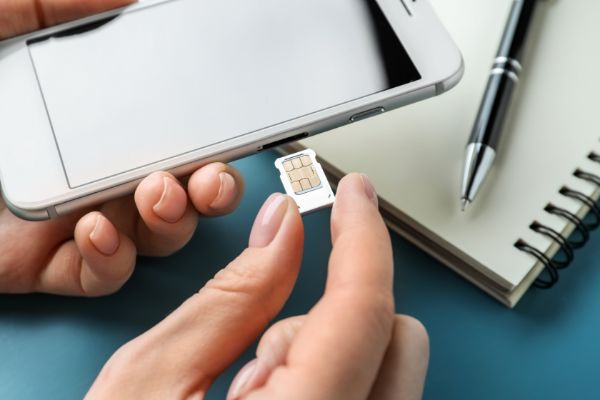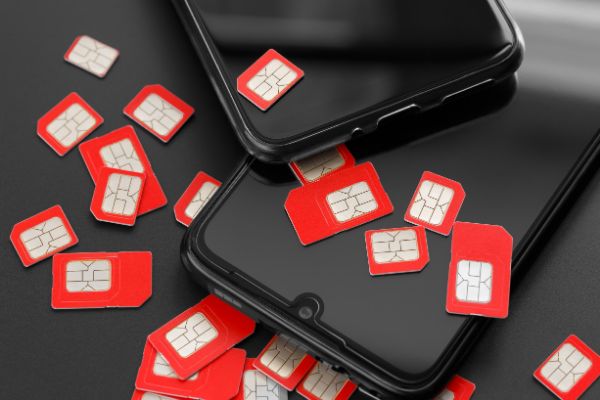Disclaimer: This post may contain affiliate links, meaning we get a small commission if you make a purchase through our links, at no cost to you. For more information, please visit our Disclaimer Page.
The modern smartphone is much more than a device you can use for calls or texts. Today, these phones function as an organizer, facilitate video calls, or use apps that connect you with people from around the globe for free. Yet, with all its powerful features, your phone relies on a small piece of technological wonder — the SIM card.
The Subscriber Identity Module (SIM) card is a unique identifier from your network provider. It shows how a network tells your phone apart from others using its services. Additionally, it stores various personal information you place on your phone.
Unlike an SD card, the SIM card is not dedicated to keeping your data. Given this, you might wonder what options you have if your SIM card tells you it is already full. We will answer this question for you in today’s article.
Table of Contents
What Do I Do When My SIM Card Says It’s Full? (3 Things)
Ordinarily, SIM cards don’t get full in the same way that other storage devices do. However, each SIM has a maximum overall capacity. And in this article, we will give some troubleshooting tips when you reach that limit.
SIM cards have limited storage space. But their primary purpose is to store information related to your network and provider. That includes user data, authentication keys to use the services of your network provider, service provider names, short message service (SMS) center data, and more.
Although your SIM can also store things like text messages and other data, that primarily goes into your smartphone’s internal memory or an SD card.
They have much more memory to keep large files for personal use. On the other hand, the SIM card stores personal data, mainly your contacts and phone numbers.
When you’ve been using your SIM card for a long time, you might soon receive a warning message that it is full. If it happens, try these tips to clean up.
1. Delete Text Messages
One of the ways you can free up your SIM card storage space is to delete text messages.
Most apps can back up your chats. So you can move them to the phone’s memory or an available SD card. However, the native text messaging app might have settings that store this data on the SIM card.
If this happens, clear it by navigating the messages on the card. After that, open individual messages and delete them to free up space. Alternatively, you can delete whole threads.
2. Delete Contacts
Your phone stores your contacts directly on the SIM card. The process makes it easier to transfer your contacts when you switch phone models. However, the small storage capacities of most SIMs limit the number of contacts you can store.
Your card shares that space with the other data we mentioned earlier. If you get an error message that your card is full, go to your phone’s address book. Go through your contacts and delete those entries you consider obsolete.
3. Delete Call Logs
The SIM card also stores your recent dialed and received calls. It can be a long list, depending on how long you have had the card.
Although there is some sense in keeping some of these logs for your records, they take up valuable space on the SIM card.
You can go through the log to delete entries individually if you wish, but most phones give you the option to clear the whole record with one press of the button.
How Much Storage Does a SIM Card Have?
The maximum storage capacity for SIM cards on the market is 256 KB. Although this may not seem like a lot of space, it is enough to store hundreds of contacts on your phone.
Text message sizes also tend to be relatively small, leaving more room for you to save some of these directly to the card.
The overall capacity of a SIM may not seem important to you, but you can choose yours based on how many essential contacts you think you’ll keep all at once.
Further, SIM cards can store a variety of network identification codes. You might use these codes with your phone for international roaming purposes.
For example, when you are roaming outside your network’s coverage area, having these numbers on your SIM might help you connect to foreign networks more quickly than you might.
What Information Does a SIM Card Store?
The simple answer is SIM cards hold data that relates to you as a smartphone user. Your SIM also authenticates your phone and gives it the permissions needed to access your provider’s network.
Of course, your phone number is one of the main pieces of information the SIM will keep.
However, your phone number differs from the ID number the SIM provides. It is the latter that helps your network identify the phone. It also tells your provider if the subscription connected to this number is active.
A few of the other things your SIM stores might include any of the following:
- An estimate of how much the typical mobile services from your provider should cost you.
- The authentication key lets the phone run on the network to which it is supposed to have access.
- A country code that tells recipients from which country you are making a call.
- Service numbers you can dial to get basic information from your provider, such as the balance of data you have left on your current cycle.
- Your SIM also contains an unblocking code. You may have to use it if you accidentally lock yourself out of your phone.
Does a SIM Card Affect Phone Storage?
No. SIM cards have no impact on phone storage. Each phone model you buy will have its amount of internal memory. You can store data on this portion of the phone, and it should work with anything.
In other words, you can put your photos, videos, documents, texts, and other files on your phone’s internal memory. Although the phone needs a SIM card to function correctly, these two types of storage are different and unrelated.
Why Aren’t SIM Cards Used Like SD Cards?
An SD card is a bit like your phone’s internal storage. It is another way to expand the space your phone can use to store all the kinds of data we touched on in the earlier section.
However, because it is a physical card accessory, some users might wonder why they can’t use SIMs like SD cards.
Various factors are at play here, but the most straightforward answer is that both cards already have established purposes. SIM cards have been standard parts of mobile phones for decades, and SD cards are a relatively recent invention to increase the storage size of smartphones.
Additionally, if SD cards were things manufacturers tied to particular providers, you would have to get SD cards from your network provider whenever you wanted to upgrade your phone’s storage space.
By separating these technologies, companies give consumers many more easy options to buy and install large SD cards from various brands.
Conclusion
The SIM card contains all the information that makes your phone unique among many other devices with the same make and model. Thanks to your phone’s SIM, the network provider you choose can authenticate it, and you can store important personal data that you can readily access.
However, this storage capacity has limits, and you may need to delete some data to make room for new information. Alternatively, you can use an SD card to store large files in different formats.


